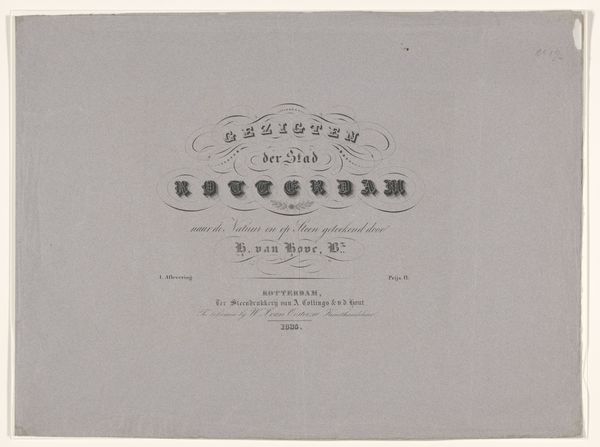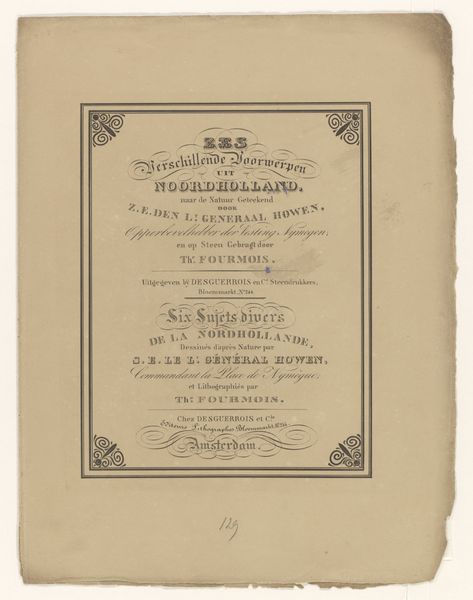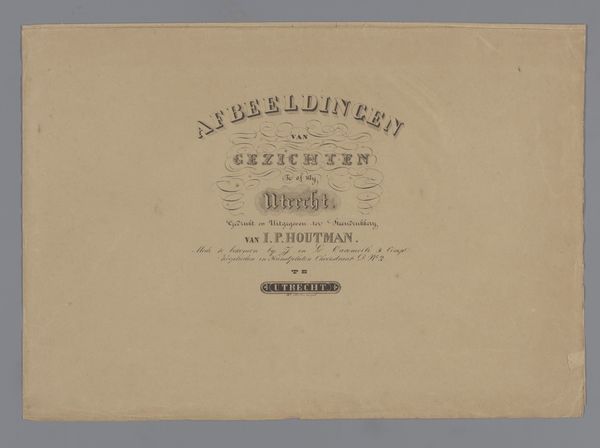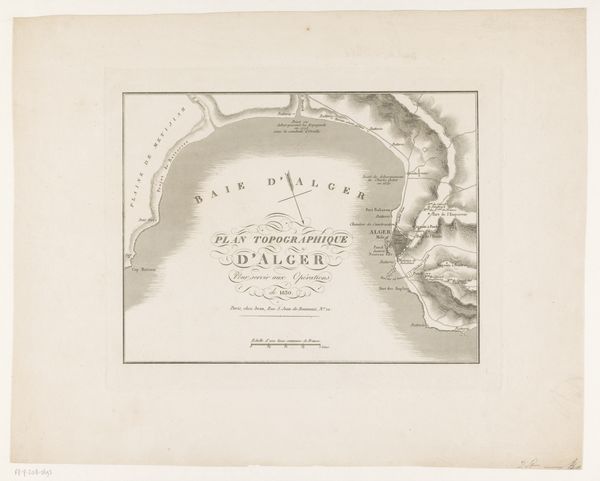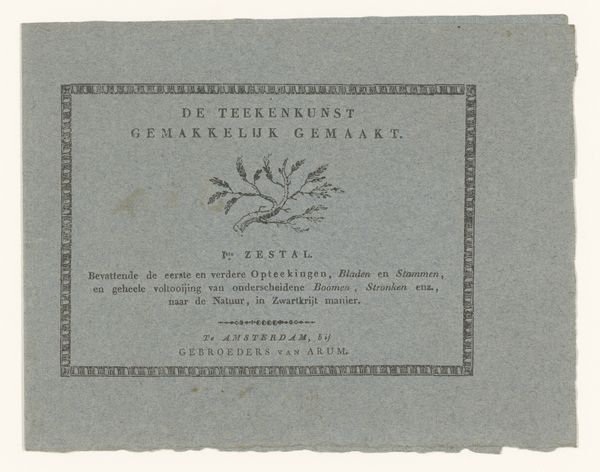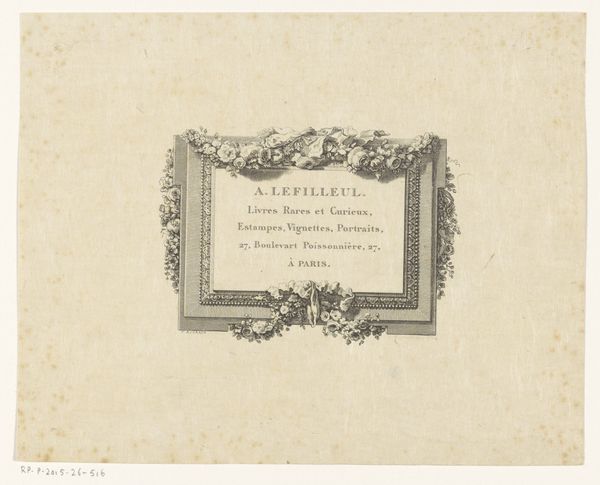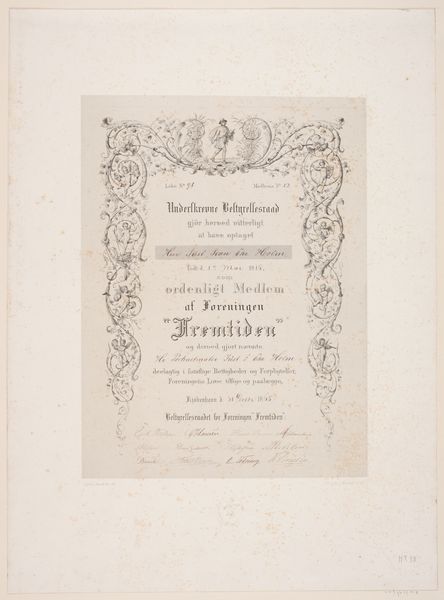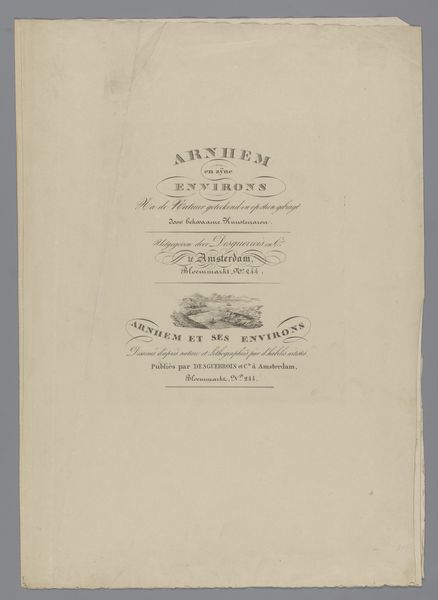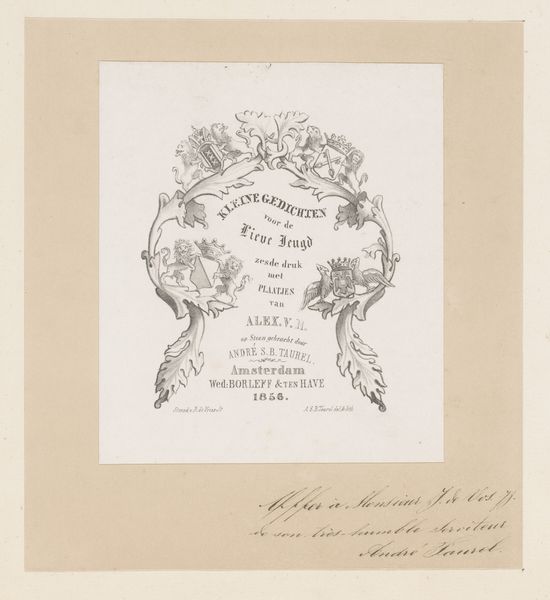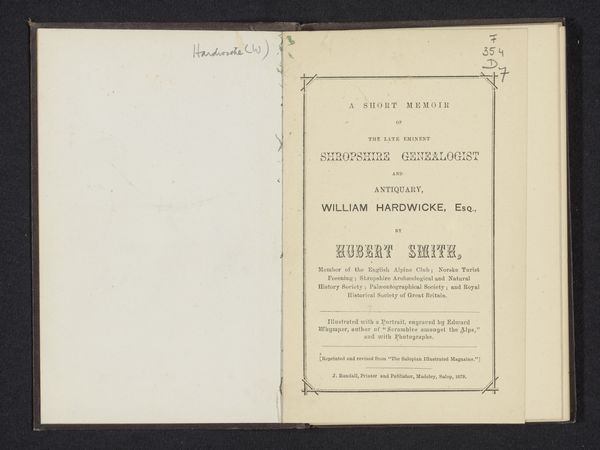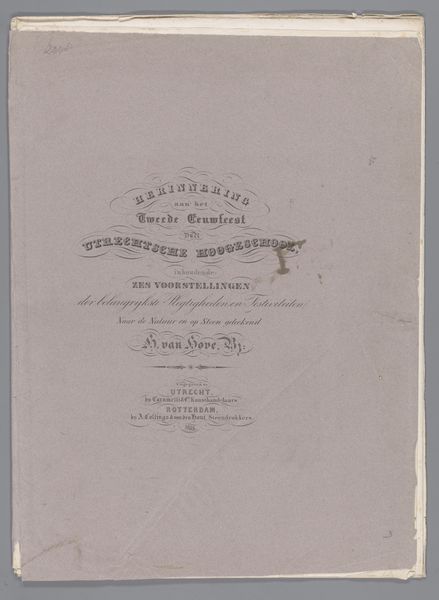
Titelblad til "Danmark fremstillet i billeder", 21. hæfte 1837 - 1874
0:00
0:00
Dimensions: 316 mm (height) x 426 mm (width) (bladmaal)
Curator: The title page before us is called "Titelblad til \"Danmark fremstillet i billeder\", 21. h\u00e6fte," dating from sometime between 1837 and 1874. Editor: It's strikingly austere, isn't it? All those neat typographic lines encased in this frame of almost mournful floral ornament, creating this peculiar mood. Curator: Indeed. It represents an interesting moment in the visual culture of Denmark. The text translates to something like "Denmark presented in pictures, issue 21." This title page would have prefaced a collection of lithographs depicting notable towns and regions, promoting a shared national identity. Editor: And consider the font itself! That heavy, shadowed typeface shouts "DANMARK", embedding an idea of solidity and importance in a period surely filled with shifting national sentiment. Why 21st part, I wonder. Do you think it carries a hidden significance? Curator: It would have been a piece of commercial ephemera intended for a broad public. So it’s likely it marks how many editions this graphic was printed, so people could collate a larger volume for personal collections, which speaks to a rising middle class and increased access to visual materials. Editor: Which really shifts my view. It suggests not just national identity, but an identity connected to cultural ownership. What's fascinating, though, is the degree to which that identity feels so curated by these printing firms of the period. What imagery made the cut in representing this sense of shared nationality and heritage, and what were its makers hoping to instill with those representations? Curator: Precisely. The distribution of images through print became a powerful tool in shaping public perception, fostering national narratives, and contributing to collective memory. "Denmark Presented in Pictures," even on its own title page, becomes not just a presentation, but an argument. Editor: So even such unassuming works reveal these interesting threads tying art and social construction together. Looking again, there's something intensely melancholic. Curator: These simple works show how graphic arts, though seemingly minor, engaged actively in national conversations of the time.
Comments
No comments
Be the first to comment and join the conversation on the ultimate creative platform.
